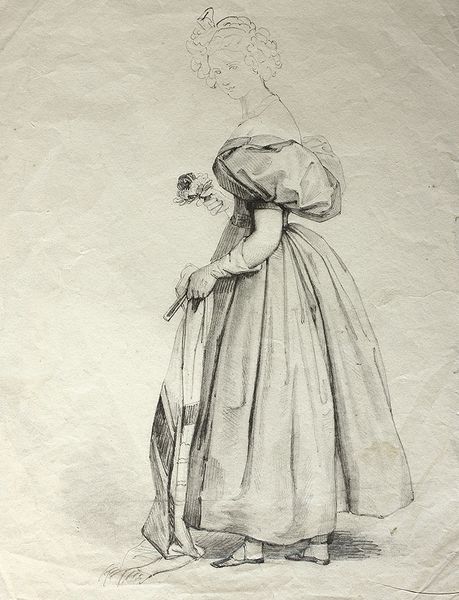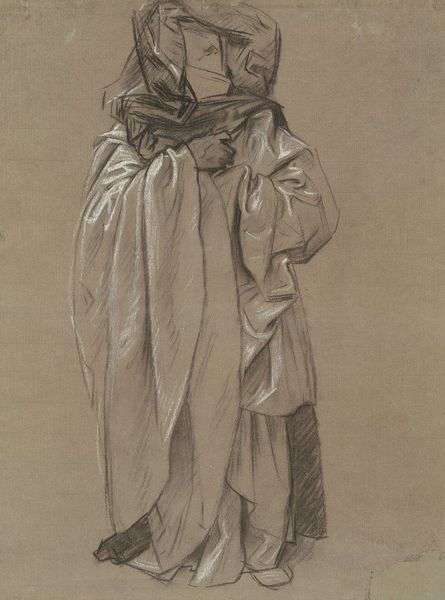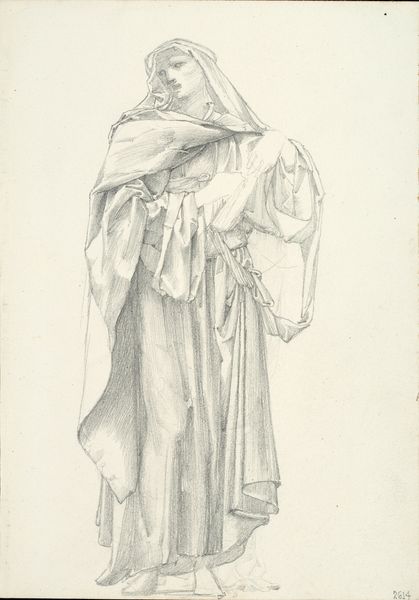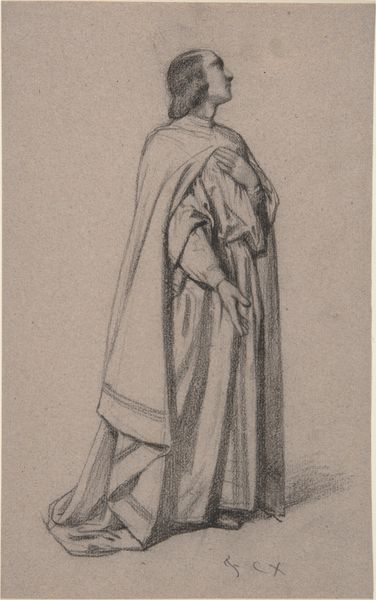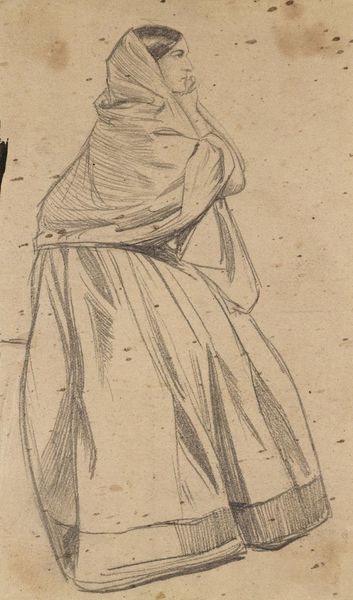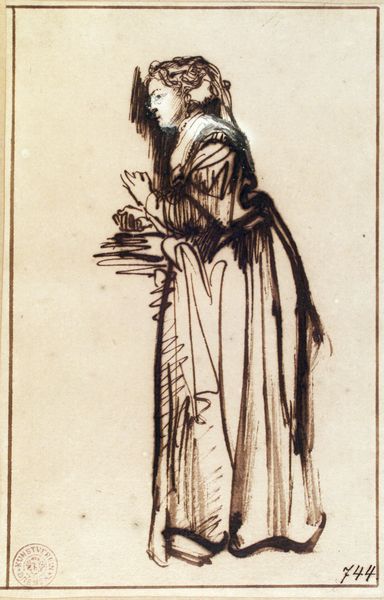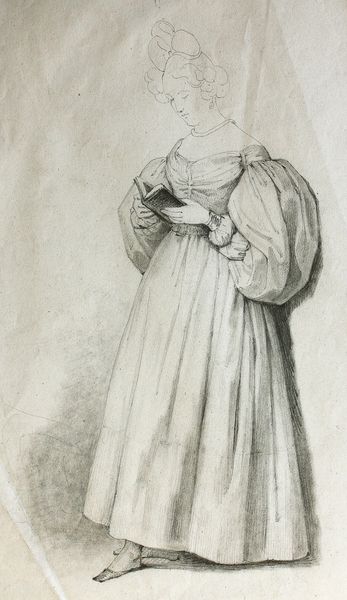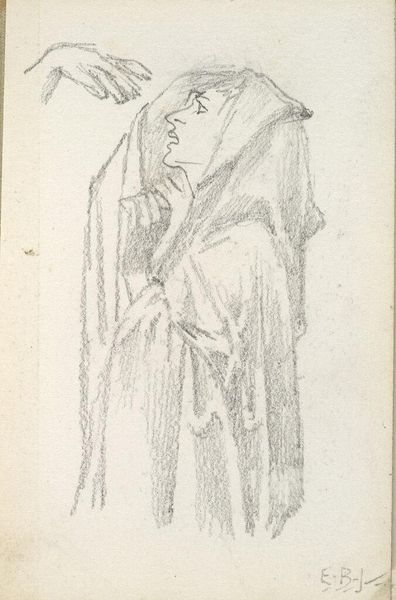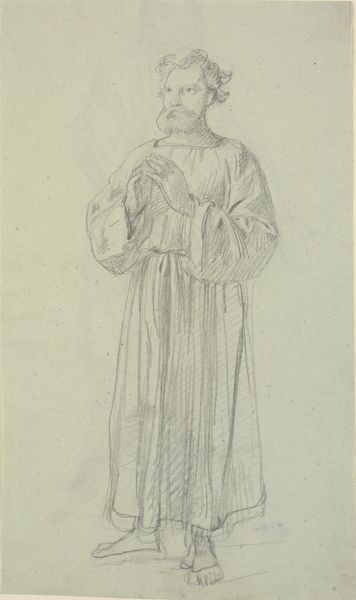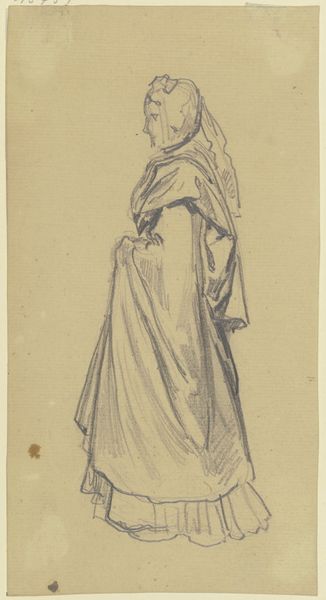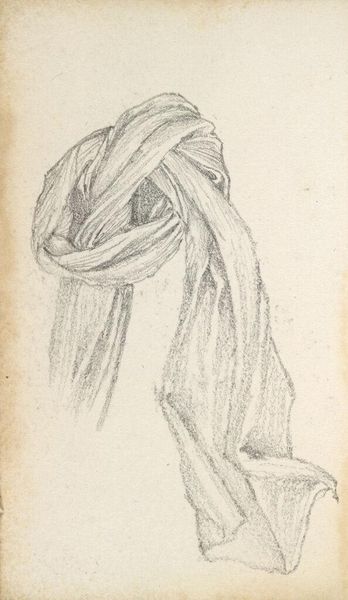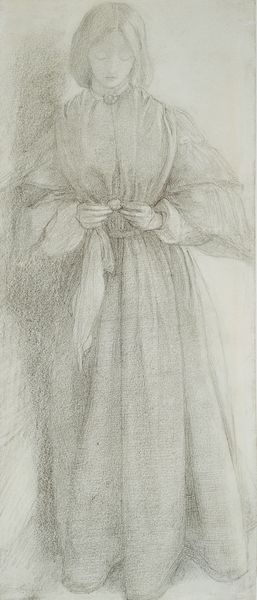
drawing, paper, pencil
#
portrait
#
pencil drawn
#
drawing
#
pencil sketch
#
charcoal drawing
#
figuration
#
paper
#
11_renaissance
#
pencil drawing
#
sketch
#
pencil
#
costume
#
portrait drawing
#
northern-renaissance
Copyright: Public domain
Editor: Here we have Albrecht Dürer’s "A Nuremberg Costume Study" from around 1500, a pencil drawing on paper. I’m struck by how much detail he manages to capture, especially in the folds of her gown and the intricate head covering. What do you see in this piece? Curator: Beyond Dürer’s technical skill, this drawing offers us a window into the rigid social structures of Renaissance Nuremberg. Consider how meticulously he renders the clothing – it’s not just fabric, it's a statement of identity, a visible marker of status and perhaps even religious affiliation. Does her restrictive attire perhaps confine her identity, reducing her to a symbol of marital status or family wealth? Editor: I hadn't considered the attire as restrictive, but you're right, it does seem very prescribed. I wonder, did women have any agency in choosing how they presented themselves at that time? Curator: Agency is a complicated question in any historical context. While sumptuary laws dictated many aspects of dress, personal touches and interpretations surely existed, representing subtle acts of defiance or expressions of individuality. We must also be aware of how Dürer, as a male artist, is filtering this image, imbuing it with his perspective on femininity and status. What do you think is Dürer’s statement on femininity? Is it positive, or perhaps somewhat ironic? Editor: That's a really interesting point. Maybe he's subtly critiquing those social constraints through the almost excessive detail? It makes you think about the power dynamics at play, both in the creation of the artwork and within the society it depicts. I never thought a costume study could be so telling! Curator: Exactly! Art offers the tools to decode visual languages. The visual representation reflects on social structures. Examining these images, what can they reveal about gender, power, and social position? It calls to the ways these impact our present day. Editor: Thank you, I now understand how costume and societal factors play an integral role in Renaissance portraiture.
Comments
No comments
Be the first to comment and join the conversation on the ultimate creative platform.

